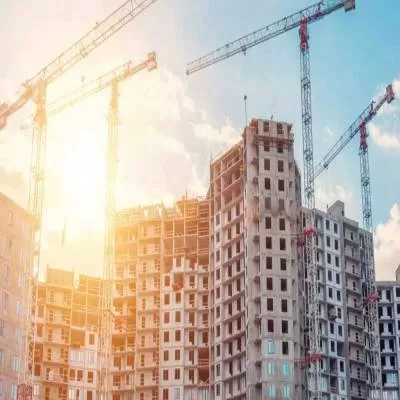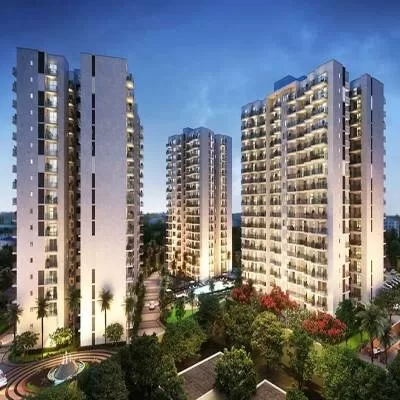- Home
- Real Estate
- Real Landscape

Real Landscape
Owing to depleting land resources, skyrocketing prices, decreasing potential in metros or Tier-I cities in India, real-estate development has been slowly shifting to Tier-II and Tier-III cities in the past decade. Apart from developers, investors, consumers and the government have also been eyeing these cities with interest. Industry professionals and experts aver that this is the right trend as it will decongest the metros and reduce some of the migration load. A 2010 study by McKinsey Global Institute states that by 2030, nearly 590 million people will live in India´s cities, twice the population of the US today, and emphasises the importance of paying attention to these cities with serious policy measures. Not doing so will worsen the urban decay, leading to poor quality of life, says the report.
The Indian Government has been taking measures from time to time to boost the development of Tier-II and III cities. Several schemes and programmes to this end have been floated by the Centre and state governments, including the Jawaharlal Nehru National Urban Renewal Mission (JNNURM). According to a study carried out in 2005, around 23 per cent of the operational Software Technology Parks of India (STPI) units are in Tier-II and III cities, while nearly 40 per cent of the notified IT SEZs and 30 per cent of operational IT SEZs are in these areas.
The growth
Several factors are driving real-estate growth in these cities, the foremost being the movement of several manufacturing units, IT companies, BPOs, hospitality and retail sectors for gainful business. The increasing disposable income of the population, reasonable real-estate prices, cheaper labour cost and lower operational costs have been lures for companies looking for new markets. This, in turn, has enhanced demand for housing and commercial spaces. While local developers have been gearing up to meet rising demand, several national players such as Tata Housing, Ansal, Godrej Properties, Lodha, Omaxe, Raheja, DLF, Purvankara, and Sahara Infrastructure have also forayed into these cities.
While increasing employment opportunities, affordable housing, better living conditions and lower cost of living are attracting home buyers, investors are also trouping in from metros and abroad, particularly NRIs. People who buy residential property in these cities are typically either local residents or those living in Tier-I cities, but unable to afford a home there who plan to return here after retirement. In addition, NRIs planning to return home in future are also investing in these cities. ´The real-estate market in Tier-II and III cities has shaped up relatively well over the past few years compared to Tier-I cities,´ states Deep Kantawala, Group CFO and Head, ICS Real Estate Partners. ´There are many factors driving growth in these cities, right from availability of relatively cheaper land and increased job opportunities with the expansion of the IT or ITes sector to good infrastructure ensuring a hassle-free commute and availability of lifestyle facilities and security at relatively affordable prices. These cities are also good investment destinations not only for people employed in these cities, but locals employed outside the city who intend to return to their roots after retirement.´
Ashish Puravankara, Managing Director, Puravankara Projects, concurs, saying, ´Demand is largely from the local market. In addition, is the migrant population that has moved to larger cities, like from Coimbatore to Chennai, Mangalore to Bengaluru or from Kochi to the Middle East for employment.
They all prefer to have a home in their hometown.´
Puravankara has been active in Coimbatore, Kochi, Mysuru, Mangalore and Pune. NRI investment in these cities has been substantial, more so in Tier-II and III cities in Gujarat, says Jignesh Amin, Managing Director, White Wings Group. He lists out the reasons: ´Gujarat has always been a favourable place for NRI investment in real estate. With the economic slowdown in the US and UK, many Gujarati NRIs feel the state is a safe passage for investment. The Gujarat Government has also relaxed registration formalities for NRIs. Further, the Indian economy has shown a rising trend after the slowdown in 2009-2010. These factors have led to growing real-estate investment by NRIs in Surat.´ The White Wings Group, which has completed three commercial and three residential projects in Surat, has two ongoing projects. Pune enjoys its own growth drivers, explains Kishor Pate, Chairman & Managing Director, Amit Enterprises Housing.
´In the first place, it has a strong presence of IT and ITeS, which are generating a continuous stream of jobs for the city´s software professionals in addition to countless BPO jobs. Second, it has a thriving service sector, from corporate back offices and e-commerce to retail and hospitality. Finally, the city has a large established manufacturing belt catering to various industries.
The biggest share of mid-income home buyers in the city comes from people employed in these sectors, while the luxury home segment is patronised by the C Suite managerial cadre, business owners and successful entrepreneurs.´ Amit Enterprises, which has been focusing on Pune with 70 completed projects and another 15 in the pipeline, has recently entered Nasik.
´Commercial real estate has also benefitted in these markets as many multinational companies are setting up their base here, owing to inexpensive real estate and a relatively economical talent pool vis-a-vis the Tier-I cities,´ states Kantawala.
The trends
While the premium housing segment has created its own niche, the trend in many of these cities in the past few years has been towards affordable housing, aver industry pundits.
´The trend towards affordable housing has started in the past two to three years in Gurgaon. It can largely be attributed to the demand for affordable homes from people shifting to these cities for jobs at every level. Also, it is in consonance with the government´s mission of providing ´Housing for All by 2022´,´ elaborates Ananya Lal, General Manager-Architecture, Tulip Infratech, which is active in the NCR with several group housing and commercial projects, having completed seven group housing projects in Gurgaon and Sonepat.
Lal adds that the architectural trend in these cities varies widely depending upon the locality, local cultural and ethnic background. ´In Gurgaon, as a whole, the trends in architecture are localised, greatly varying from old areas of the city to new developing areas. The current ´global architecture´ or modern steel-and-glass architecture prevails largely among offices of multinationals, IT buildings, shopping malls, etc. The new multi-storeyed group housing societies are also more or less following the trend of modern architecture of vertical and horizontal straight lines.´
The infrastructure
In some Tier-II and III cities, physical and social infrastructure is good too, though in many others it definitely needs upscaling. These cities suffer from poor internal and international connectivity. Today, only a dozen have international flight connectivity, and only five have major ports.
However, there are several ongoing and proposed projects likely to improve the infrastructure in these cities and provide interconnectivity. To list a few, the Delhi-Mumbai Dedicated Freight Corridor, industrial corridors between several states such as Delhi-Mumbai, Chennai-Bengaluru, Vizag-Chennai, Amritsar-Kolkata, metro projects in many cities, Nagpur-Secunderabad and Nagpur-Bilaspur high-speed trains, multi-modal international hub airport in Nagpur, Agra to Lucknow access-controlled expressway, Jhansi-Kanpur-Lucknow-Gorakhpur-Kushinagar and Lucknow-Barabanki-Nanpara expressway, Pimpri-Chinchwad Ring Road, international airport at Mohali to be connected to city airport, Delhi-Gurgaon Corridor, etc.
The government is also planning to develop 200 low-cost airports across the country in the next few years and has already identified 50 such cities under the first phase of this development. It is also considering upgrading some airports to international airports.
The challenges
Evidently, these cities are already working towards tackling existing challenges like poor infrastructure, connectivity and not-so-investor-friendly government policies. For developers, the challenges are the same as in any metro. ´Government policies are not real-estate-friendly; the NA procedure and plan approvals are time-consuming,´ points out Amin.
And Puravankara adds, ´Fundamentally, the challenges are no different from what is prevailing in larger cities such as Mumbai or Bengaluru, except that the market size is small.´
The future
According to a recently released report by CREDAI and property consultant Cushman & Wakefield, initiatives such as the Smart Cities mission and the Atal Mission for Rejuvenation and Urban Transformation (AMRUT) are likely to improve the liveability of Tier-II and Tier-III cities. The report also points out that the Smart Cities programme will provide many opportunities for the real-estate sector as 89 per cent of the proposed Rs 48,000 crore investment in the first 20 such cities would be earmarked towards urban development, housing, transformation, water and energy.
The report has identified
11 cities - Bhubaneswar, Chandigarh, Coimbatore, Indore, Jaipur, Kochi, Lucknow, Nagpur, Surat, Vadodara and Visakhapatnam - as potential high-growth cities, which could witness the entry of many national developers.
Kantawala is also of the opinion that the recent policy initiatives announced by the government will further boost the growth of the real-estate sector in Tier-II and III cities.
He elaborates: ´The Smart Cities mission will give a much-needed thrust. The list of the first 20 cities identified under this mission includes a number of Tier-II and III cities such as Bhubaneshwar, Jaipur, Ahmedabad, Kochi and Indore, among others. Under the Pradhan Mantri Awaz Yojana, the government has identified over 2,500 cities and towns in 26 states to address the estimated housing shortage of over 20 million units. The Union Budget 2016 announced 100 per cent deduction on profits for housing projects building homes up to 60 sq m, outside metro cities, which is likely to spur the development of affordable housing.´
No doubt, Tier-II and Tier-III cities are being drawn into the mainstream. And going forward, they will become the growth engines of the future.
Quick Bytes
- Movement of manufacturing units, IT companies, BPOs, hospitality and retail sectors for gainful business are driving real-estate growth in Tier-II and III cities. Affordable housing, better living conditions and low-cost of living are attracting investors, especially NRIs.
- Physical and social infrastructure in many cities need upscaling.
- The Smart Cities mission and AMRUT are likely to improve the liveability of these cities.
Facts and Figures
Kochi has been ranked as the top Tier-II city followed by Nasik, Vishakapatnam and Vadodara.
Around 58 per cent of the IT-BPO workforce today is from Tier-II or III cities.
Post 2005, MNCs started looking at Tier-II Indian cities as future R&D hubs.
Eight of the nine new IITs have been set up in Tier-II or Tier-III cities and nine new NITs are coming up in Tier-III cities.
Three out of every 10 colleges in India are present in Tier-II cities, with Coimbatore and Jaipur leading.
Source: Industry voices
´Pune has a large established manufacturing belt catering to various industries.´
- Kishor Pate, Chairman & Managing Director, Amit Enterprises Housing
´Demand is largely from the local market.´
- Ashish Puravankara, Managing Director, Puravankara Projects
´NRI investment in these cities has been substantial, more so in Tier-II and III cities in Gujarat.´
- Jignesh Amin, Managing Director, White Wings Group
´Tier-II and III cities are also good investment destinations.´
- Deep Kantawala, Group CFO and Head, ICS Real Estate Partners
´The trend towards affordable housing has started in the past two to three years in Gurgaon. ´
- Ananya Lal, General Manager-Architecture, Tulip Infratech
- JANAKI KRISHNAMOORTHI To share your views on this article, write in at feedback@constructionworld.in
- Tier-II
- Tier-III cities
- McKinsey Global Institute
- JNNURM
- STPI
- Tata Housing
- Ansal
- Godrej Properties
- Lodha
- Omaxe
- Raheja
- DLF
- Purvankara
- Deep Kantawala
- ICS Real Estate Partners
- Ashish Puravankara
- Puravankara Projects
- Ananya Lal
- Tulip Infratech
- Delhi-Mumbai Dedicated Freight Corridor
- CREDAI
- Cushman And Wakefield
- AMRUT
- Smart Cities programme
- Smart Cities mission
- JANAKI KRISHNAMO
Apart from developers, investors, consumers and the government are eyeing India´s Tier-II and Tier-III cities with interest. Owing to depleting land resources, skyrocketing prices, decreasing potential in metros or Tier-I cities in India, real-estate development has been slowly shifting to Tier-II and Tier-III cities in the past decade. Apart from developers, investors, consumers and the government have also been eyeing these cities with interest. Industry professionals and experts aver that this is the right trend as it will decongest the metros and reduce some of the migration load. A 2010 study by McKinsey Global Institute states that by 2030, nearly 590 million people will live in India´s cities, twice the population of the US today, and emphasises the importance of paying attention to these cities with serious policy measures. Not doing so will worsen the urban decay, leading to poor quality of life, says the report. The Indian Government has been taking measures from time to time to boost the development of Tier-II and III cities. Several schemes and programmes to this end have been floated by the Centre and state governments, including the Jawaharlal Nehru National Urban Renewal Mission (JNNURM). According to a study carried out in 2005, around 23 per cent of the operational Software Technology Parks of India (STPI) units are in Tier-II and III cities, while nearly 40 per cent of the notified IT SEZs and 30 per cent of operational IT SEZs are in these areas. The growth Several factors are driving real-estate growth in these cities, the foremost being the movement of several manufacturing units, IT companies, BPOs, hospitality and retail sectors for gainful business. The increasing disposable income of the population, reasonable real-estate prices, cheaper labour cost and lower operational costs have been lures for companies looking for new markets. This, in turn, has enhanced demand for housing and commercial spaces. While local developers have been gearing up to meet rising demand, several national players such as Tata Housing, Ansal, Godrej Properties, Lodha, Omaxe, Raheja, DLF, Purvankara, and Sahara Infrastructure have also forayed into these cities. While increasing employment opportunities, affordable housing, better living conditions and lower cost of living are attracting home buyers, investors are also trouping in from metros and abroad, particularly NRIs. People who buy residential property in these cities are typically either local residents or those living in Tier-I cities, but unable to afford a home there who plan to return here after retirement. In addition, NRIs planning to return home in future are also investing in these cities. ´The real-estate market in Tier-II and III cities has shaped up relatively well over the past few years compared to Tier-I cities,´ states Deep Kantawala, Group CFO and Head, ICS Real Estate Partners. ´There are many factors driving growth in these cities, right from availability of relatively cheaper land and increased job opportunities with the expansion of the IT or ITes sector to good infrastructure ensuring a hassle-free commute and availability of lifestyle facilities and security at relatively affordable prices. These cities are also good investment destinations not only for people employed in these cities, but locals employed outside the city who intend to return to their roots after retirement.´ Ashish Puravankara, Managing Director, Puravankara Projects, concurs, saying, ´Demand is largely from the local market. In addition, is the migrant population that has moved to larger cities, like from Coimbatore to Chennai, Mangalore to Bengaluru or from Kochi to the Middle East for employment. They all prefer to have a home in their hometown.´ Puravankara has been active in Coimbatore, Kochi, Mysuru, Mangalore and Pune. NRI investment in these cities has been substantial, more so in Tier-II and III cities in Gujarat, says Jignesh Amin, Managing Director, White Wings Group. He lists out the reasons: ´Gujarat has always been a favourable place for NRI investment in real estate. With the economic slowdown in the US and UK, many Gujarati NRIs feel the state is a safe passage for investment. The Gujarat Government has also relaxed registration formalities for NRIs. Further, the Indian economy has shown a rising trend after the slowdown in 2009-2010. These factors have led to growing real-estate investment by NRIs in Surat.´ The White Wings Group, which has completed three commercial and three residential projects in Surat, has two ongoing projects. Pune enjoys its own growth drivers, explains Kishor Pate, Chairman & Managing Director, Amit Enterprises Housing. ´In the first place, it has a strong presence of IT and ITeS, which are generating a continuous stream of jobs for the city´s software professionals in addition to countless BPO jobs. Second, it has a thriving service sector, from corporate back offices and e-commerce to retail and hospitality. Finally, the city has a large established manufacturing belt catering to various industries. The biggest share of mid-income home buyers in the city comes from people employed in these sectors, while the luxury home segment is patronised by the C Suite managerial cadre, business owners and successful entrepreneurs.´ Amit Enterprises, which has been focusing on Pune with 70 completed projects and another 15 in the pipeline, has recently entered Nasik. ´Commercial real estate has also benefitted in these markets as many multinational companies are setting up their base here, owing to inexpensive real estate and a relatively economical talent pool vis-a-vis the Tier-I cities,´ states Kantawala. The trends While the premium housing segment has created its own niche, the trend in many of these cities in the past few years has been towards affordable housing, aver industry pundits. ´The trend towards affordable housing has started in the past two to three years in Gurgaon. It can largely be attributed to the demand for affordable homes from people shifting to these cities for jobs at every level. Also, it is in consonance with the government´s mission of providing ´Housing for All by 2022´,´ elaborates Ananya Lal, General Manager-Architecture, Tulip Infratech, which is active in the NCR with several group housing and commercial projects, having completed seven group housing projects in Gurgaon and Sonepat. Lal adds that the architectural trend in these cities varies widely depending upon the locality, local cultural and ethnic background. ´In Gurgaon, as a whole, the trends in architecture are localised, greatly varying from old areas of the city to new developing areas. The current ´global architecture´ or modern steel-and-glass architecture prevails largely among offices of multinationals, IT buildings, shopping malls, etc. The new multi-storeyed group housing societies are also more or less following the trend of modern architecture of vertical and horizontal straight lines.´ The infrastructure In some Tier-II and III cities, physical and social infrastructure is good too, though in many others it definitely needs upscaling. These cities suffer from poor internal and international connectivity. Today, only a dozen have international flight connectivity, and only five have major ports. However, there are several ongoing and proposed projects likely to improve the infrastructure in these cities and provide interconnectivity. To list a few, the Delhi-Mumbai Dedicated Freight Corridor, industrial corridors between several states such as Delhi-Mumbai, Chennai-Bengaluru, Vizag-Chennai, Amritsar-Kolkata, metro projects in many cities, Nagpur-Secunderabad and Nagpur-Bilaspur high-speed trains, multi-modal international hub airport in Nagpur, Agra to Lucknow access-controlled expressway, Jhansi-Kanpur-Lucknow-Gorakhpur-Kushinagar and Lucknow-Barabanki-Nanpara expressway, Pimpri-Chinchwad Ring Road, international airport at Mohali to be connected to city airport, Delhi-Gurgaon Corridor, etc. The government is also planning to develop 200 low-cost airports across the country in the next few years and has already identified 50 such cities under the first phase of this development. It is also considering upgrading some airports to international airports. The challenges Evidently, these cities are already working towards tackling existing challenges like poor infrastructure, connectivity and not-so-investor-friendly government policies. For developers, the challenges are the same as in any metro. ´Government policies are not real-estate-friendly; the NA procedure and plan approvals are time-consuming,´ points out Amin. And Puravankara adds, ´Fundamentally, the challenges are no different from what is prevailing in larger cities such as Mumbai or Bengaluru, except that the market size is small.´ The future According to a recently released report by CREDAI and property consultant Cushman & Wakefield, initiatives such as the Smart Cities mission and the Atal Mission for Rejuvenation and Urban Transformation (AMRUT) are likely to improve the liveability of Tier-II and Tier-III cities. The report also points out that the Smart Cities programme will provide many opportunities for the real-estate sector as 89 per cent of the proposed Rs 48,000 crore investment in the first 20 such cities would be earmarked towards urban development, housing, transformation, water and energy. The report has identified 11 cities - Bhubaneswar, Chandigarh, Coimbatore, Indore, Jaipur, Kochi, Lucknow, Nagpur, Surat, Vadodara and Visakhapatnam - as potential high-growth cities, which could witness the entry of many national developers. Kantawala is also of the opinion that the recent policy initiatives announced by the government will further boost the growth of the real-estate sector in Tier-II and III cities. He elaborates: ´The Smart Cities mission will give a much-needed thrust. The list of the first 20 cities identified under this mission includes a number of Tier-II and III cities such as Bhubaneshwar, Jaipur, Ahmedabad, Kochi and Indore, among others. Under the Pradhan Mantri Awaz Yojana, the government has identified over 2,500 cities and towns in 26 states to address the estimated housing shortage of over 20 million units. The Union Budget 2016 announced 100 per cent deduction on profits for housing projects building homes up to 60 sq m, outside metro cities, which is likely to spur the development of affordable housing.´ No doubt, Tier-II and Tier-III cities are being drawn into the mainstream. And going forward, they will become the growth engines of the future. Quick Bytes Movement of manufacturing units, IT companies, BPOs, hospitality and retail sectors for gainful business are driving real-estate growth in Tier-II and III cities. Affordable housing, better living conditions and low-cost of living are attracting investors, especially NRIs. Physical and social infrastructure in many cities need upscaling. The Smart Cities mission and AMRUT are likely to improve the liveability of these cities. Facts and Figures Kochi has been ranked as the top Tier-II city followed by Nasik, Vishakapatnam and Vadodara. Around 58 per cent of the IT-BPO workforce today is from Tier-II or III cities. Post 2005, MNCs started looking at Tier-II Indian cities as future R&D hubs. Eight of the nine new IITs have been set up in Tier-II or Tier-III cities and nine new NITs are coming up in Tier-III cities. Three out of every 10 colleges in India are present in Tier-II cities, with Coimbatore and Jaipur leading. Source: Industry voices ´Pune has a large established manufacturing belt catering to various industries.´ - Kishor Pate, Chairman & Managing Director, Amit Enterprises Housing ´Demand is largely from the local market.´ - Ashish Puravankara, Managing Director, Puravankara Projects ´NRI investment in these cities has been substantial, more so in Tier-II and III cities in Gujarat.´ - Jignesh Amin, Managing Director, White Wings Group ´Tier-II and III cities are also good investment destinations.´ - Deep Kantawala, Group CFO and Head, ICS Real Estate Partners ´The trend towards affordable housing has started in the past two to three years in Gurgaon. ´ - Ananya Lal, General Manager-Architecture, Tulip Infratech - JANAKI KRISHNAMOORTHI To share your views on this article, write in at feedback@constructionworld.in






















